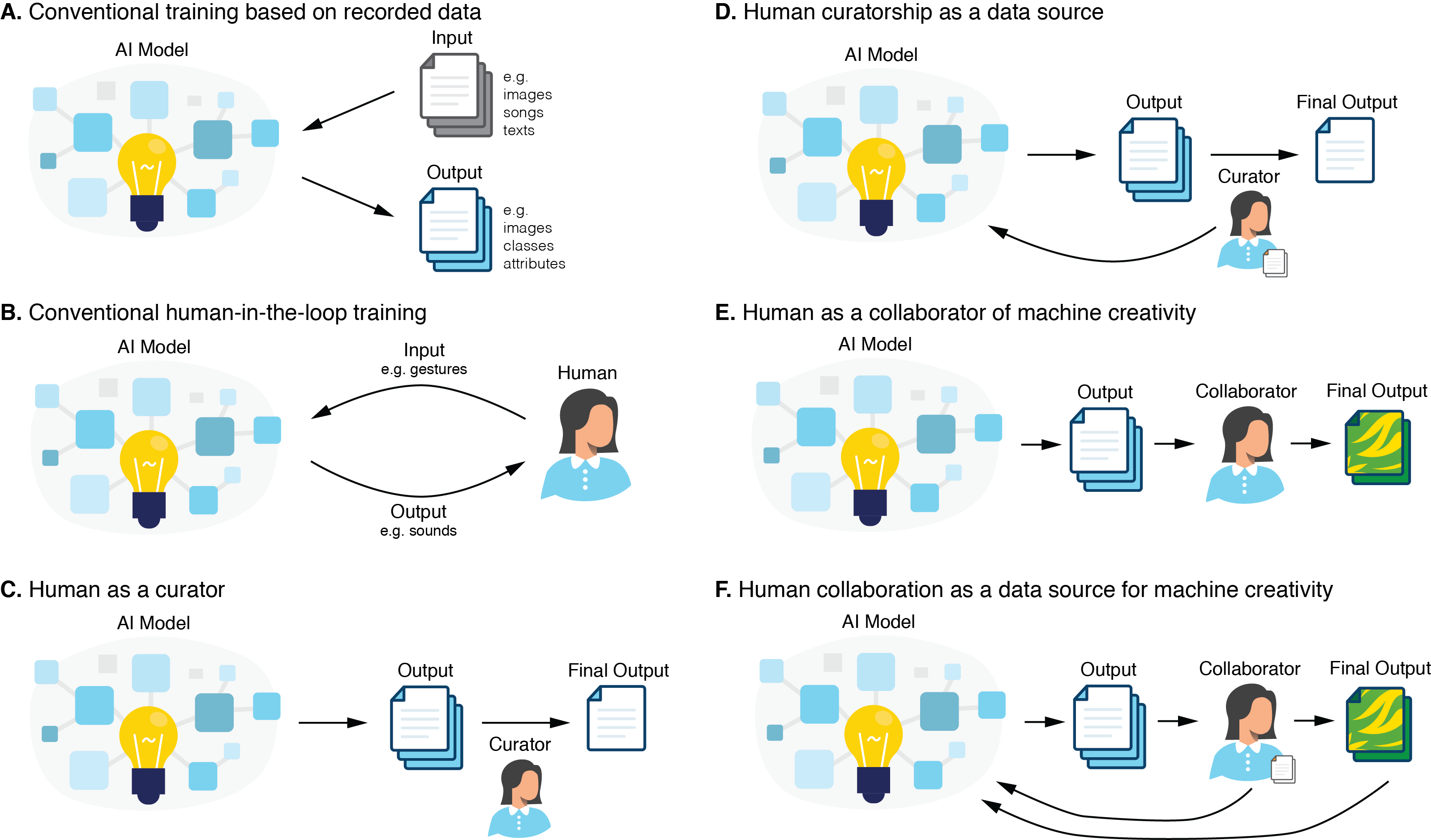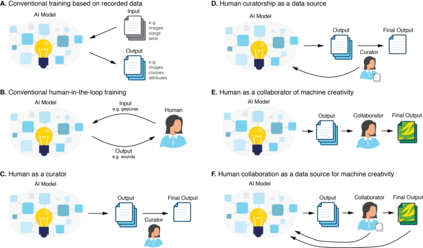Artificial intelligence (AI) is increasingly utilized in synthesizing visuals, texts, and audio. These AI-based works, often derived from neural networks, are entering the mainstream market, as digital paintings, songs, books, and others. We conceptualize both existing and future human-in-the-loop (HITL) approaches for creative applications and to develop more expressive, nuanced, and multimodal models. Particularly, how can our expertise as curators and collaborators be encoded in AI models in an interactive manner? We examine and speculate on long term implications for models, interfaces, and machine creativity. Our selection, creation, and interpretation of AI art inherently contain our emotional responses, cultures, and contexts. Therefore, the proposed HITL may help algorithms to learn creative processes that are much harder to codify or quantify. We envision multimodal HITL processes, where texts, visuals, sounds, and other information are coupled together, with automated analysis of humans and environments. Overall, these HITL approaches will increase interaction between human and AI, and thus help the future AI systems to better understand our own creative and emotional processes.
翻译:人工智能(AI)越来越多地用于合成视觉、文本和音频。这些基于人工智能的作品通常来自神经网络,正在进入主流市场,作为数字绘画、歌曲、书籍和其他。我们构思了现有和未来的“流动中人”(HITL)的创造性应用方法,并开发了更直观、细微和多式的模型。特别是,我们作为管理员和协作者的专门知识如何以互动的方式在AI模型中编码?我们研究和猜测对模型、界面和机器创造力的长期影响。我们对人工智能艺术的选择、创造和解释必然包含我们的情感反应、文化和背景。因此,拟议的“HITL”可以帮助算法学习难以编纂或量化的创造性过程。我们设想了“多式”的“流动人”过程,其中的文字、视觉、声音和其他信息与人类和环境的自动分析相结合。总体而言,这些“智能”方法将增加人与AI之间的相互作用,从而帮助未来的AI系统更好地了解我们自己的创造性和情感过程。






